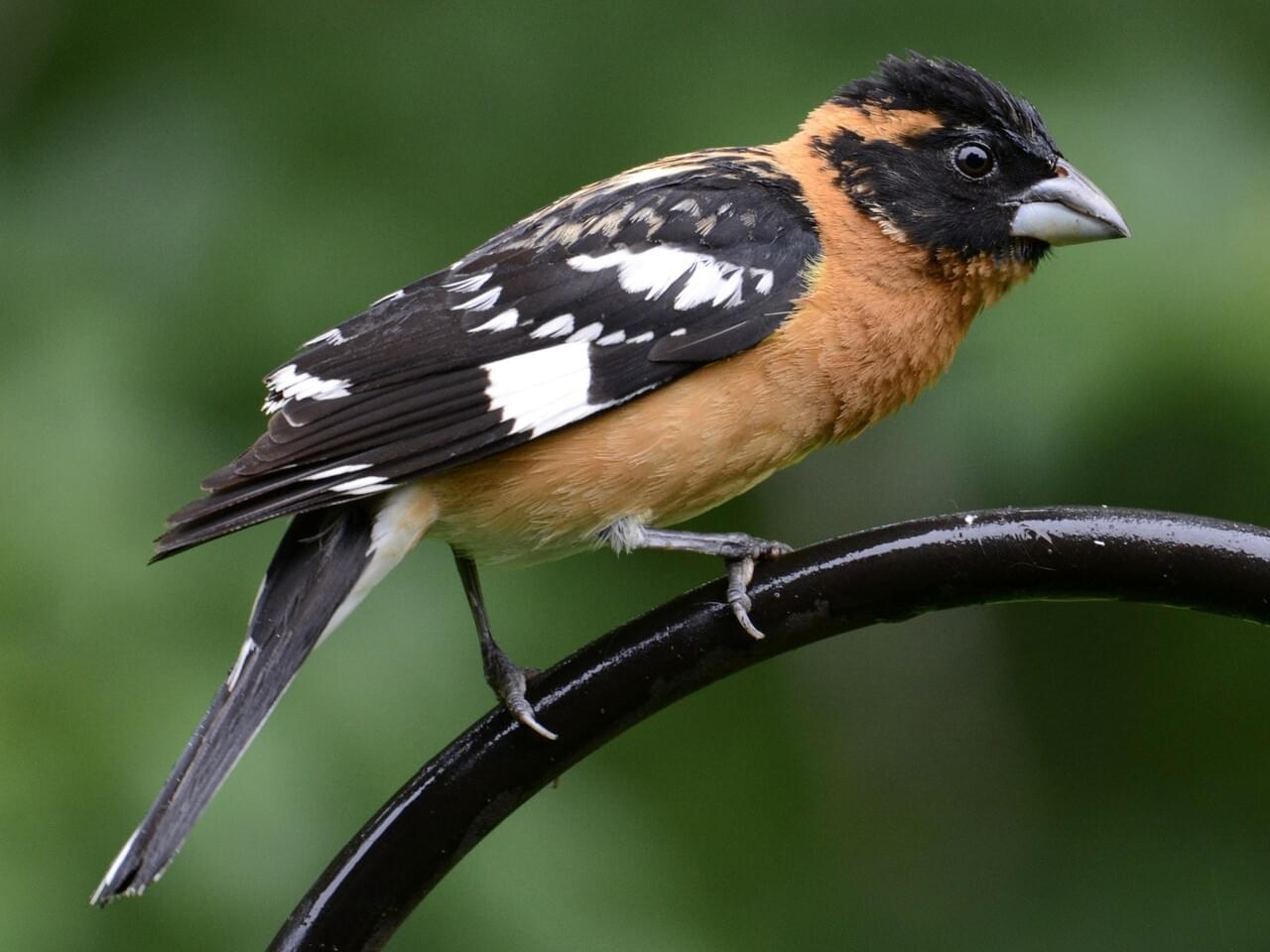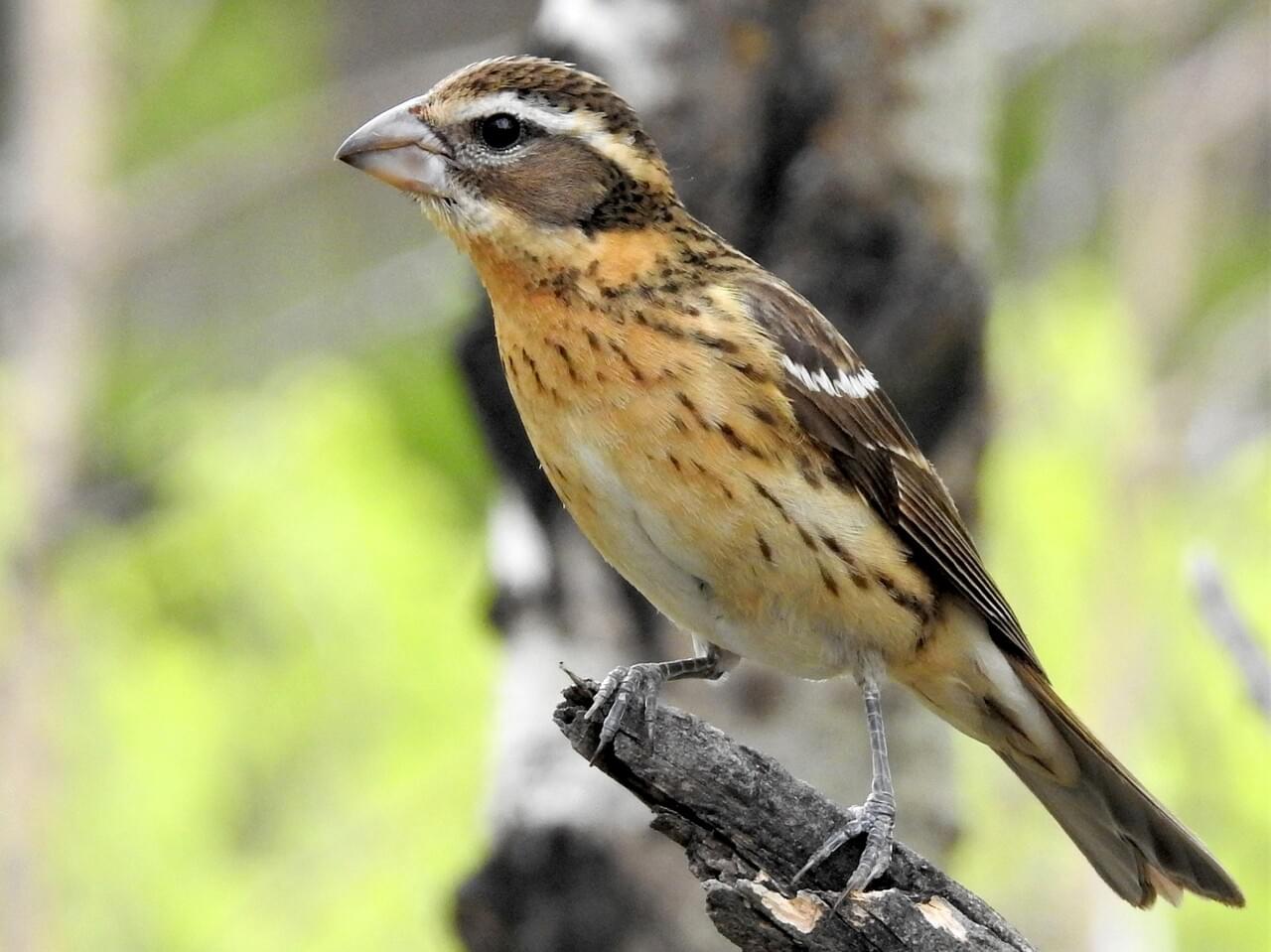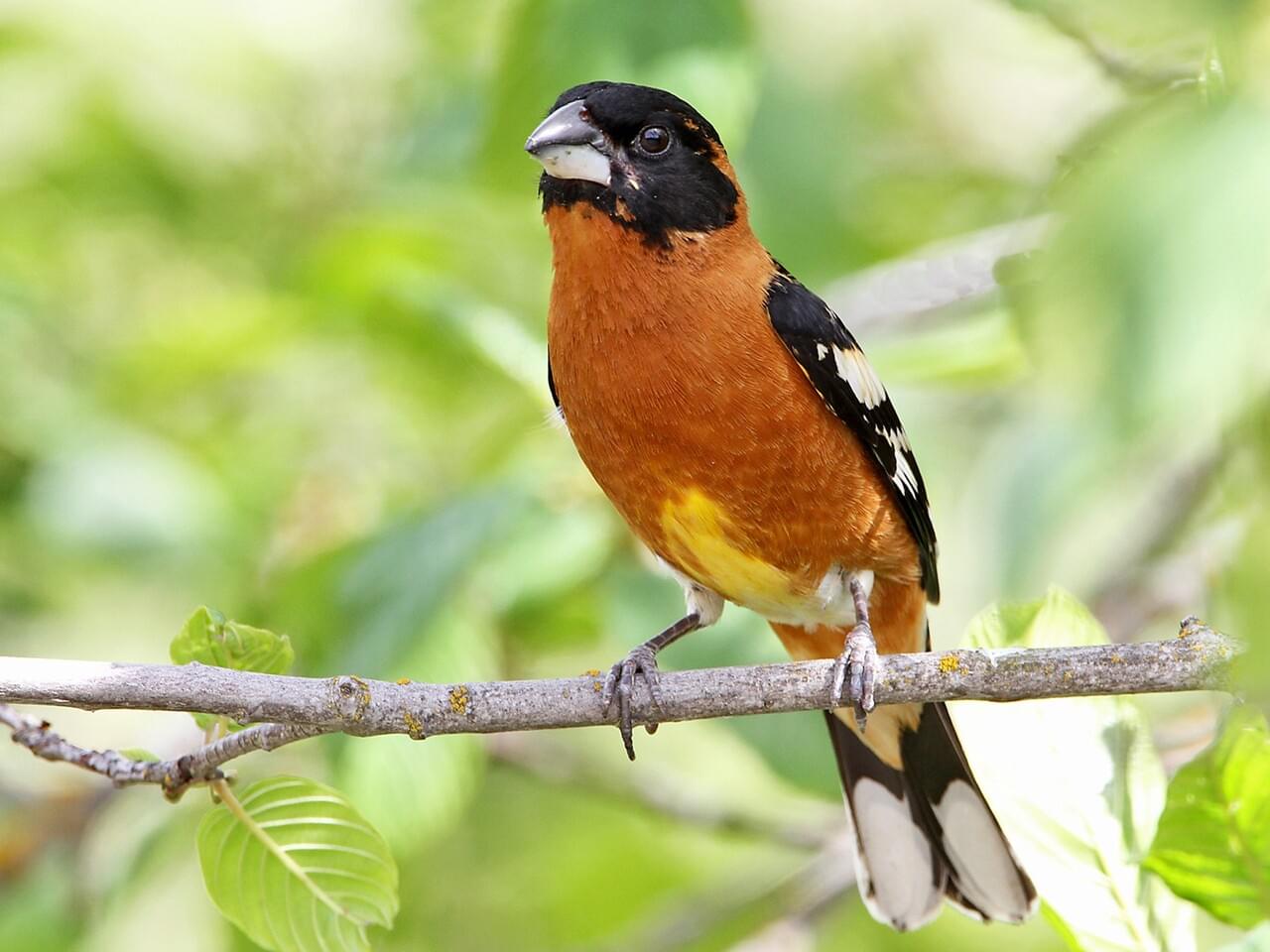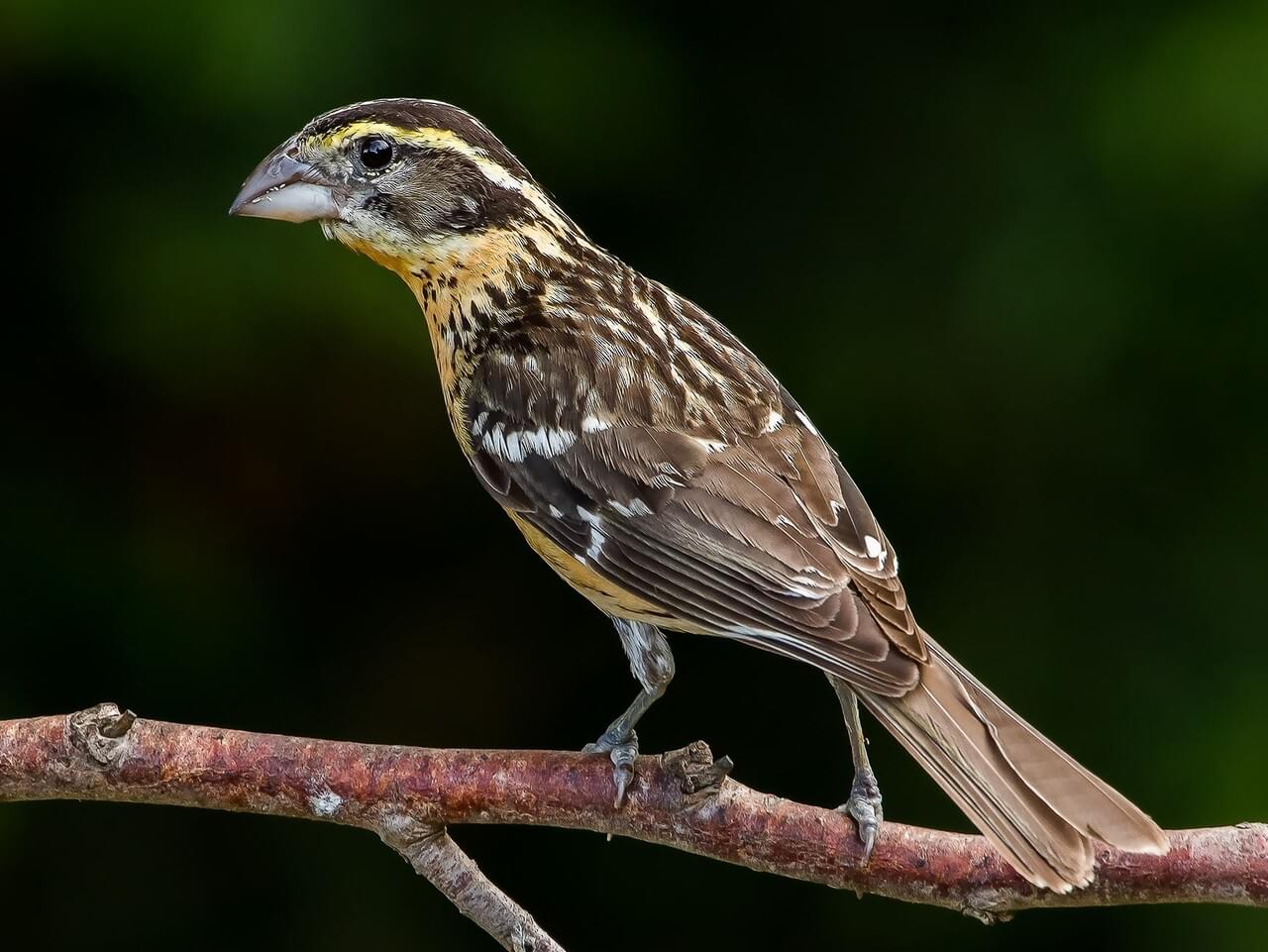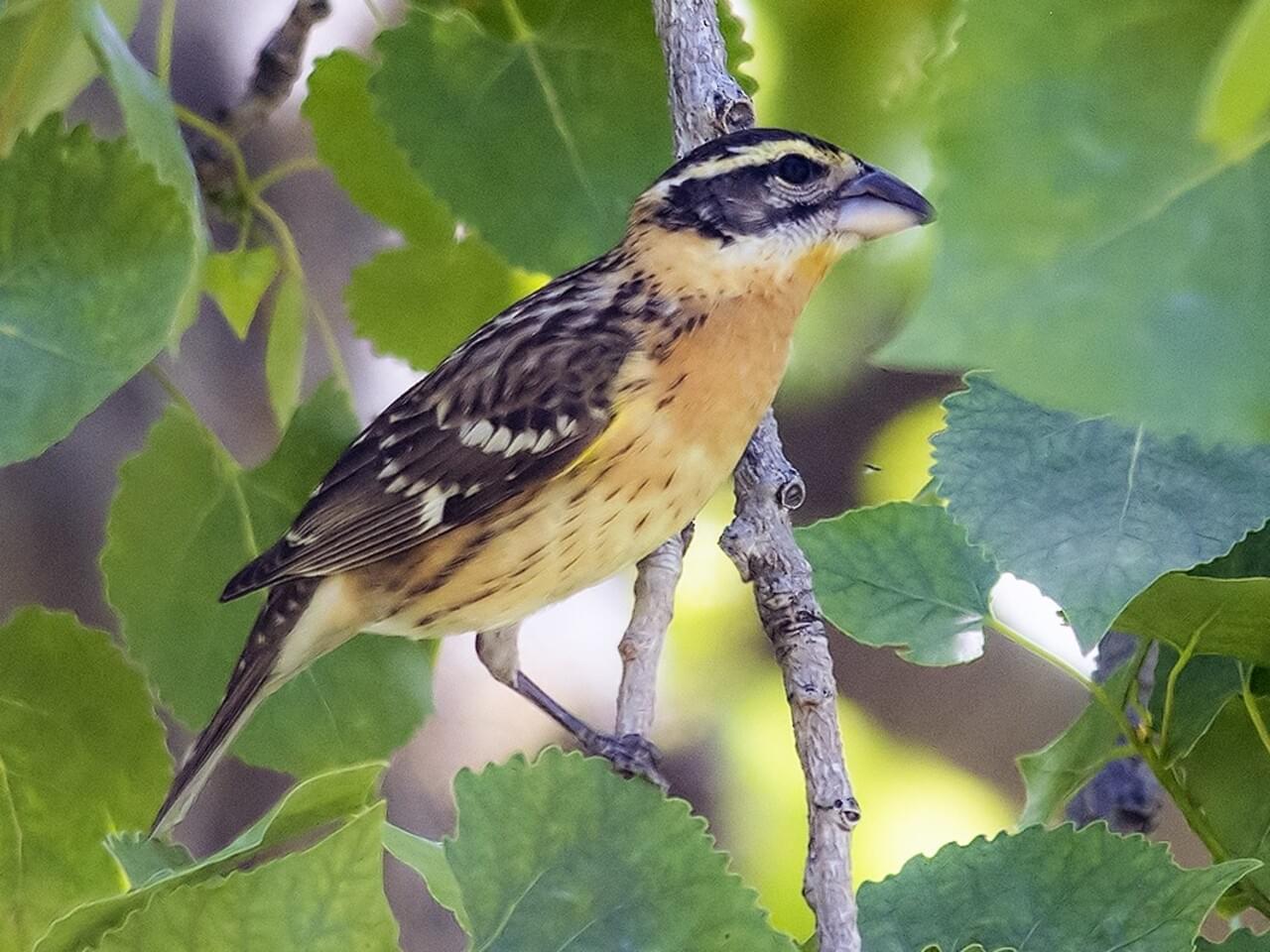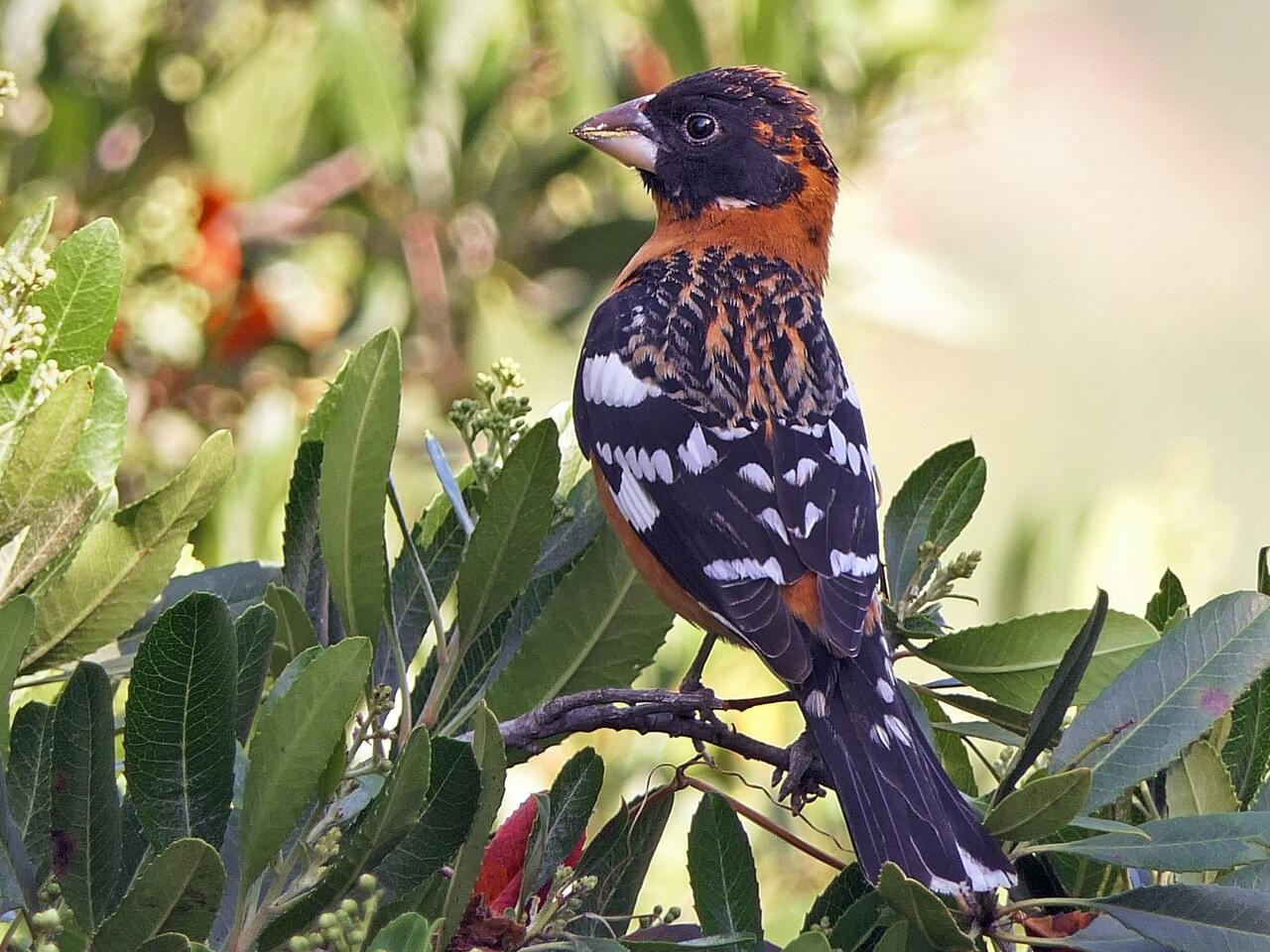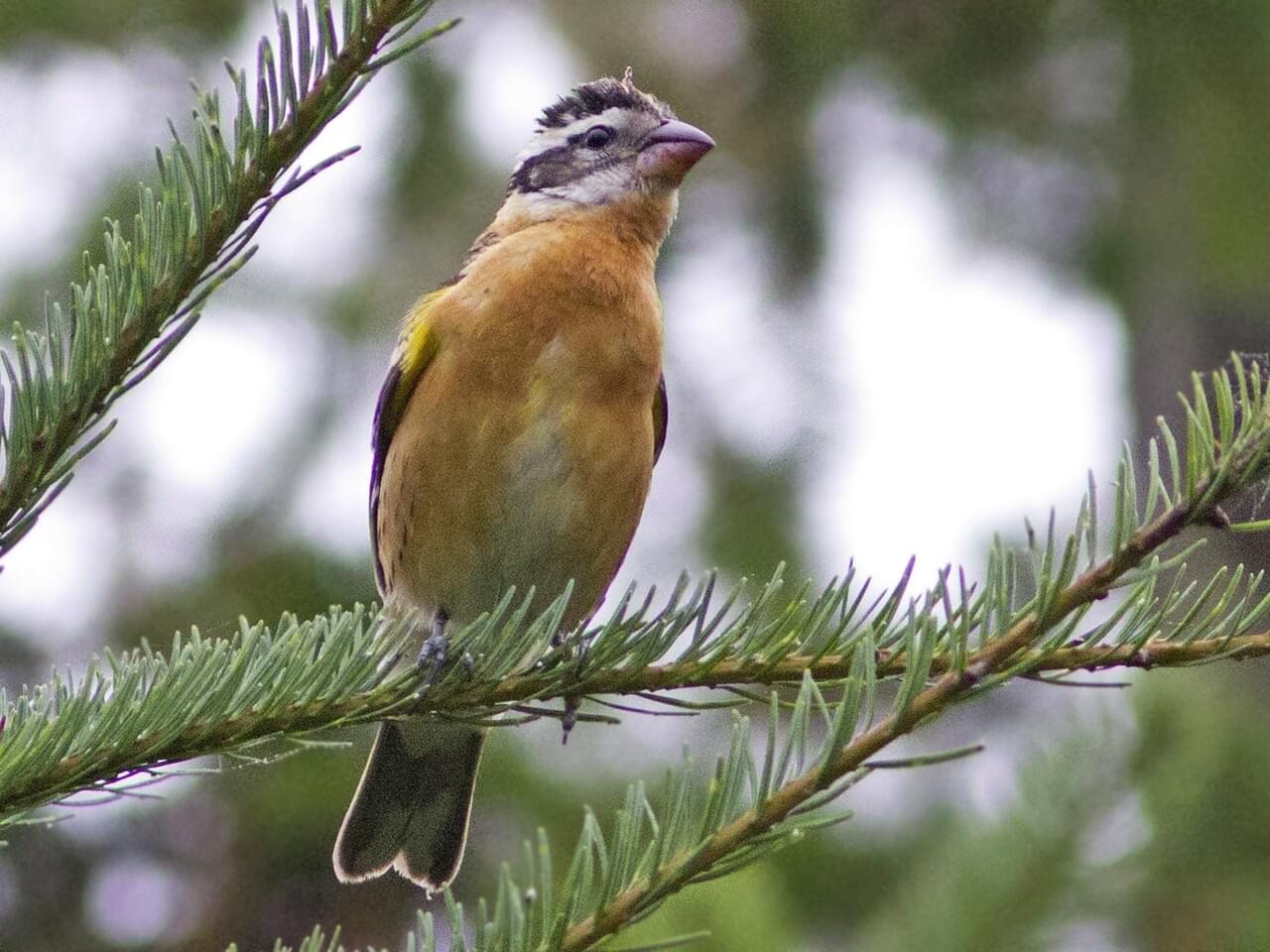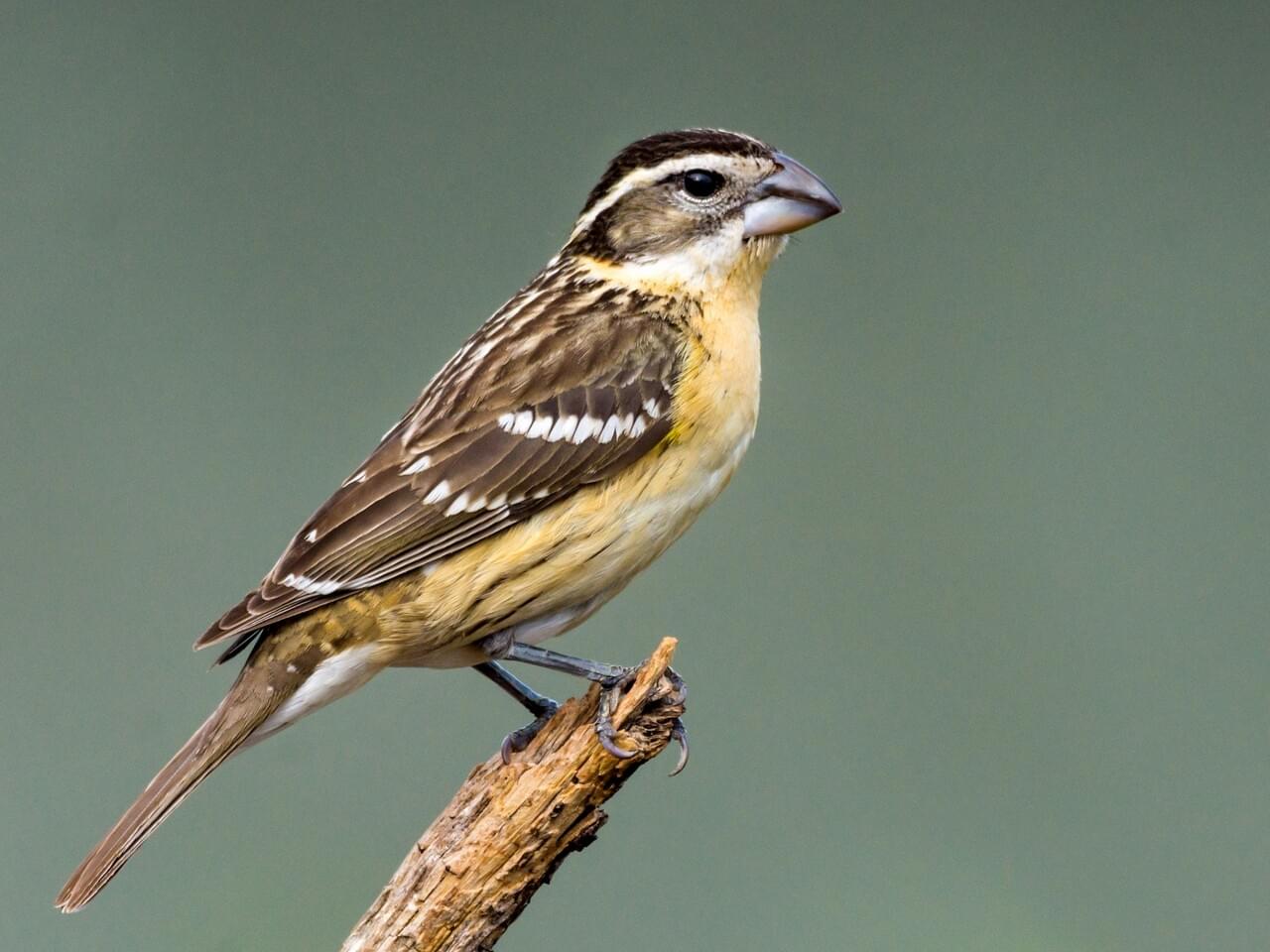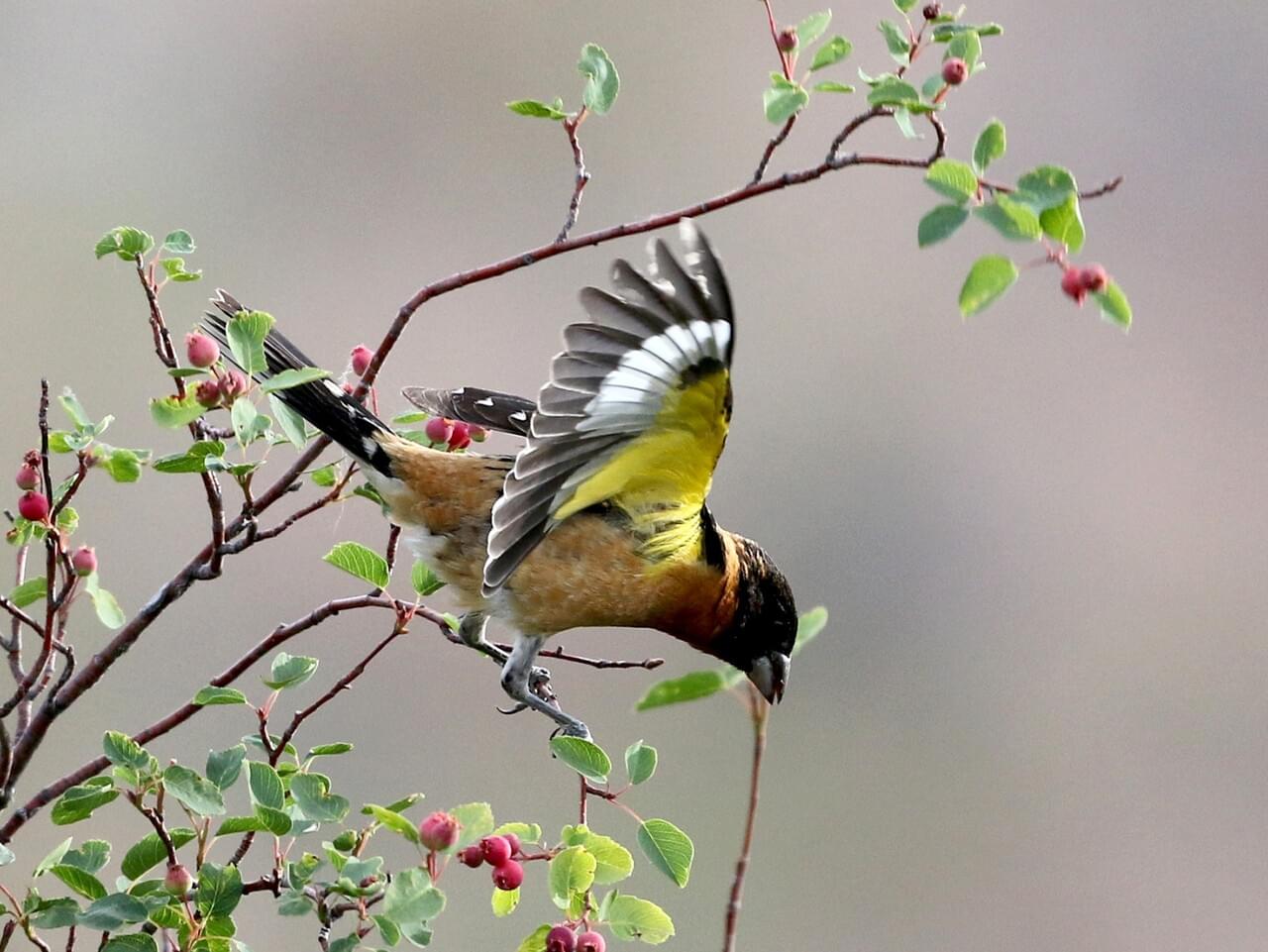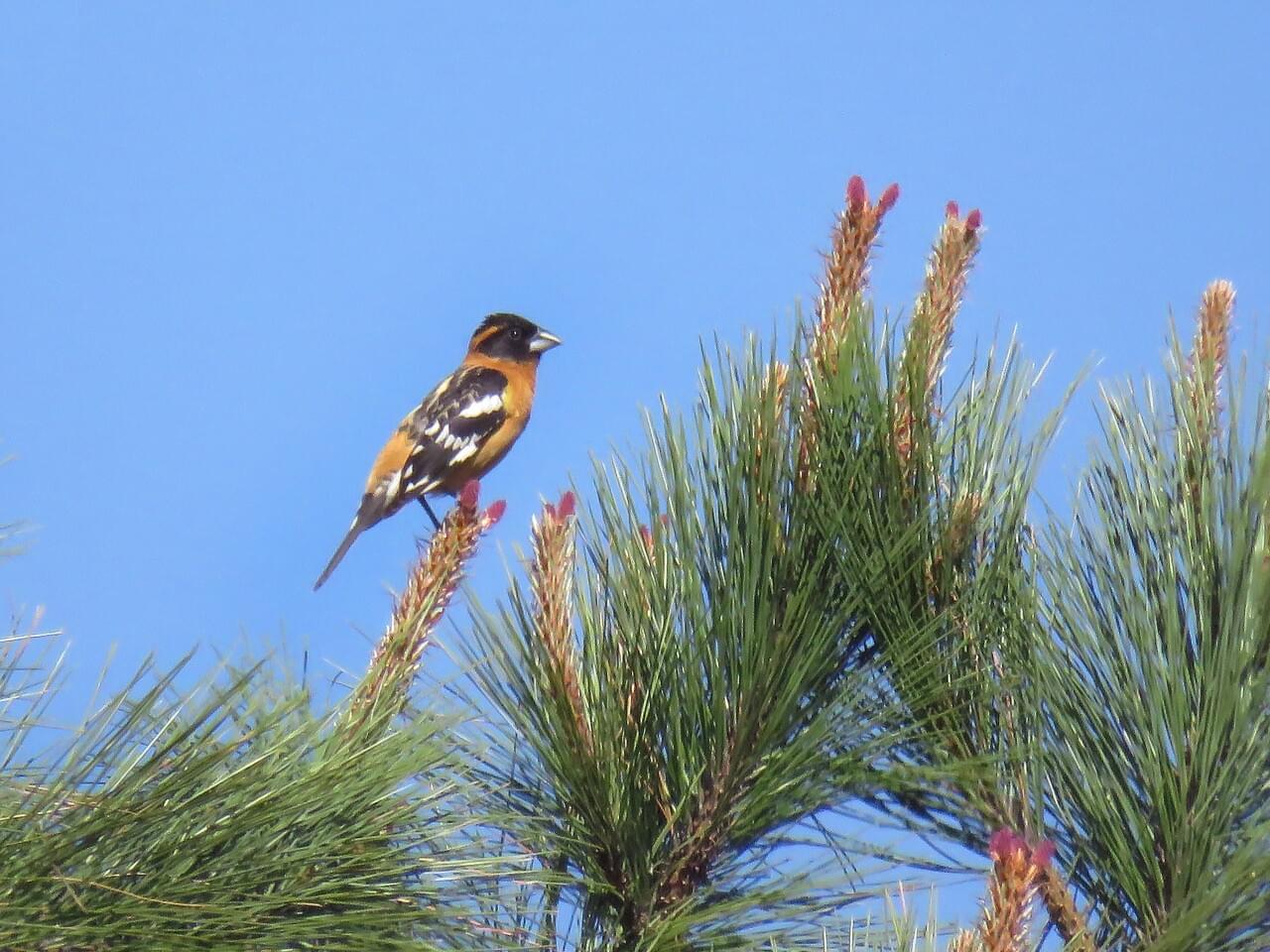Black-headed Grosbeak
Black-headed Grosbeak
(Pheucticus melanocephalus)


Black-headed Grosbeak eggs
Photo © René Corado

Black-headed Grosbeak nest
Photo © René Corado
Song
© Thomas G. Sander / Macaulay Library
Song
© Randolph Little / Macaulay Library
Song
© Jay McGowan / Macaulay Library
Song
© Andrew Spencer / Macaulay Library
Calls
© Bruce Rideout / Macaulay Library
Female calls
© Andrew Spencer / Macaulay Library
Flight calls
© Robert C. Stein / Macaulay Library
Where To Find It

Source: Birds of the World
Habitats
Substrates
What You'll Find
Nest Type
Chick
Clutch Size
2
5
Nest Height
12 ft
6 ft
Nesting Statistics
Incubation Period
12-14
days
days
Brooding Period
10-14
days
days
Useful Hints
- Black-headed Grosbeak nests are widely reported to be so thinly constructed that eggs can be seen through the bottom.
- The male Black-headed Grosbeak shares about equally with the female in incubating eggs and feeding young.
- Nests are typically placed in the outer branches of a small deciduous tree or bush near a stream.

